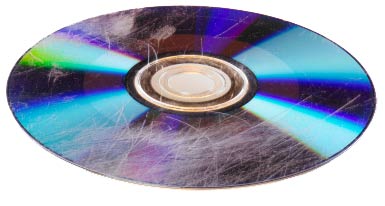
Duplcation Centre's artwork creator will help you make stunning CDs and DVDs
It can be very difficult to get a CD design which is right for your product: But, thankfully, with Duplication Centre’s new online Artwork Creator, you can design and make your own CD design! And, to help you even further on the way to getting the design you want, here are some helpful tips on how to use it…
To begin with, let us examine the basic screen. At the top, from left to right, are the options for a ‘New Design’, to ‘Load Design’, ‘Save Design’ or ‘Upload Image’ from your computer. Below is the ‘Clip Art Gallery’ at the top of which is a drop-down list allowing you to select which category of clip art you which to have displayed. Beside this is the ‘Text Tool’ and to the right of this is the colour chart which can be used to select the background colour. At the bottom of the screen is the ‘Workspace’ in which you create your image.
It is here that the first step in design occurs: Here you pick which aspect of the CD you are designing. You are given the choice to design a 4-page booklet for the insert, the CD/DVD body, a plain card for the insert, the inlay for a Jewel case, a DVD book or DVD wrap. Each option gives you a different space to design in, specifically measured to the design requirements of a CD: The CD body is the actual size of a CD body, the 4-page booklet, the correct dimensions for a 4-page booklet insert. These options are selected by pressing the option tabs at the top of the ‘Workspace’.
Within the workspace, different coloured lines mean different things: A red line indicates the edge of your product, though to allow for cutting errors, your image should go at least to the edge of the page. The light green lines indicate the space in which it safe to put important information. Between the red and green lines will be on your CD, but, again, due to cutting errors, it is not a wise plan to put important information so close to an edge which could potentially be cut off. Dark green lines indicate where the pages will fold.
It is also important to know that at the top of the ‘Workspace’, beneath the aspect option tabs, are two tabs. One says ‘Workspace’, the other, ‘Preview’. By selecting the preview tab, a new window opens with a full preview of your work. To get back to the main screen from the preview, simply close the new open window.
Once you have selected the part of the CD which you wish to design, it is time to select your background colour. Go to the right hand side of the page and find the background colour selector. You can either select one of the colours displayed or click the ‘More Colours’ button to open a new internal window which will allow you to select a colour from a chart. To get rid of it again, simply re-click the ‘More Colours’ button which will now say ‘Hide’. If you have a colour you know that you want already, simply click the ‘Enter Own Colour’ button and insert the hex code before clicking ‘Accept’.
After you have decided on your background colour, it is time to put an image onto your work. To do this you can either use one of the existing images by single-clicking on it in the ‘Artwork Gallery’ (middle, left-hand side of the screen) or upload your own. To do this, click the ‘Upload Image’ button at the very top of the screen. Then, select from your files and folders the image you wish to insert, before clicking ‘Select’. The image will then be uploaded into the workspace.
Once you have an image in the workspace, you can drag it around until it is in the correct position. You can also alter its size by bringing the mouse to the edge of the image until it turns into an arrow. Click and drag until the image is the size you want it. You can make it smaller or larger by doing this!
By inserting an image, you have made a new ‘Layer’. Each image has its own layer. To view the layers, look to the bar at the bottom right side of the screen, alongside the workspace. Drag and drop the layers higher or lower in the list to bring them forward or back. Aside from this, you can edit the brightness and opacity levels from here by selecting the layer then dragging the slider up or down on the corresponding scale in the layers toolbar. Rotation can be adjusted here, too, allowing you to twist and spin your image as much as you want.
The final thing in the design process is to insert the words you want. You could just have a title or you may want to print some lyrics inside your booklet. Whichever way, turn now to the ‘Text Tool’ which is situated near the top of the screen in between the ‘Clip Art Gallery’ and the ‘Background Colour’ selector. First, roll your mouse over the ‘Font’ button (Top left hand corner of the ‘Text Tool’) to decide which font you like. As your cursor scrolls over the font, a preview of it is temporarily shown in the Artwork Creator. Once you see a font you like, simply click on it to select it. Next, choose the size by selecting it from the drop-down list beside the ‘Font’ button. To select the justification, simply click either the right-hand orientation or the centralise buttons (top left corner of the group of icon-buttons in the top right corner of the ‘Text Tool’). Similarly, the button with the double-ended arrow going from side to side orients the text horizontally, as normal. The button with double-ended arrow going from top to bottom orients it vertically and the arrow going in a circle makes the text go in a circle. ‘Bold’, ‘Italics’ and ‘Underline buttons are directly beneath the orientation buttons and the final button in that group, which is a ‘T’ with a coloured block beside it, allows you to select the colour of the text you want. To add the text, simply click ‘Add Text’ and then drag the text to where you want it once it has appeared in the workspace. If you wish to edit the text once it has been inserted, simply double click it then edit the options in the ‘Text Tool’ space.
Lastly, to save your design, simply click the ‘Save Design’ button at the top of the screen. Click ‘Ok’ is a screen pops up, and the image you have created should save on your desktop in and ‘Artwork Creator’ folder. To load a previous design, click the ‘Load Design’ button (left of ‘Save Design’ button) then select the folder in which you previously stored the design you made. Then select the only version of the design which is not greyed out (file type ‘.prj’).
And if it all goes horribly wrong, just click the ‘New Design’ button in the top left corner of the screen which will give you a fresh canvas!
I hope this guide helps you to fill your design needs easily and effectively!








